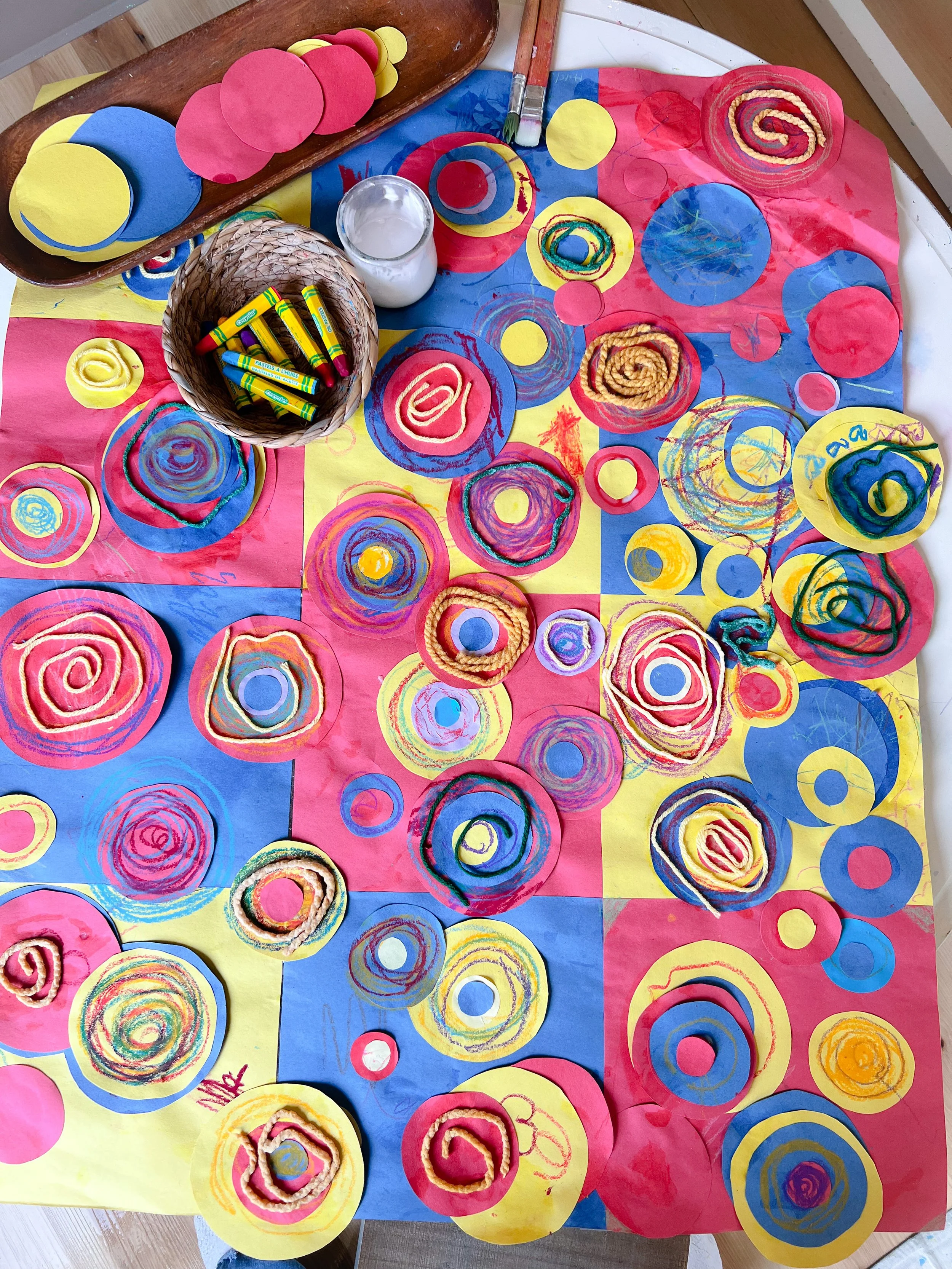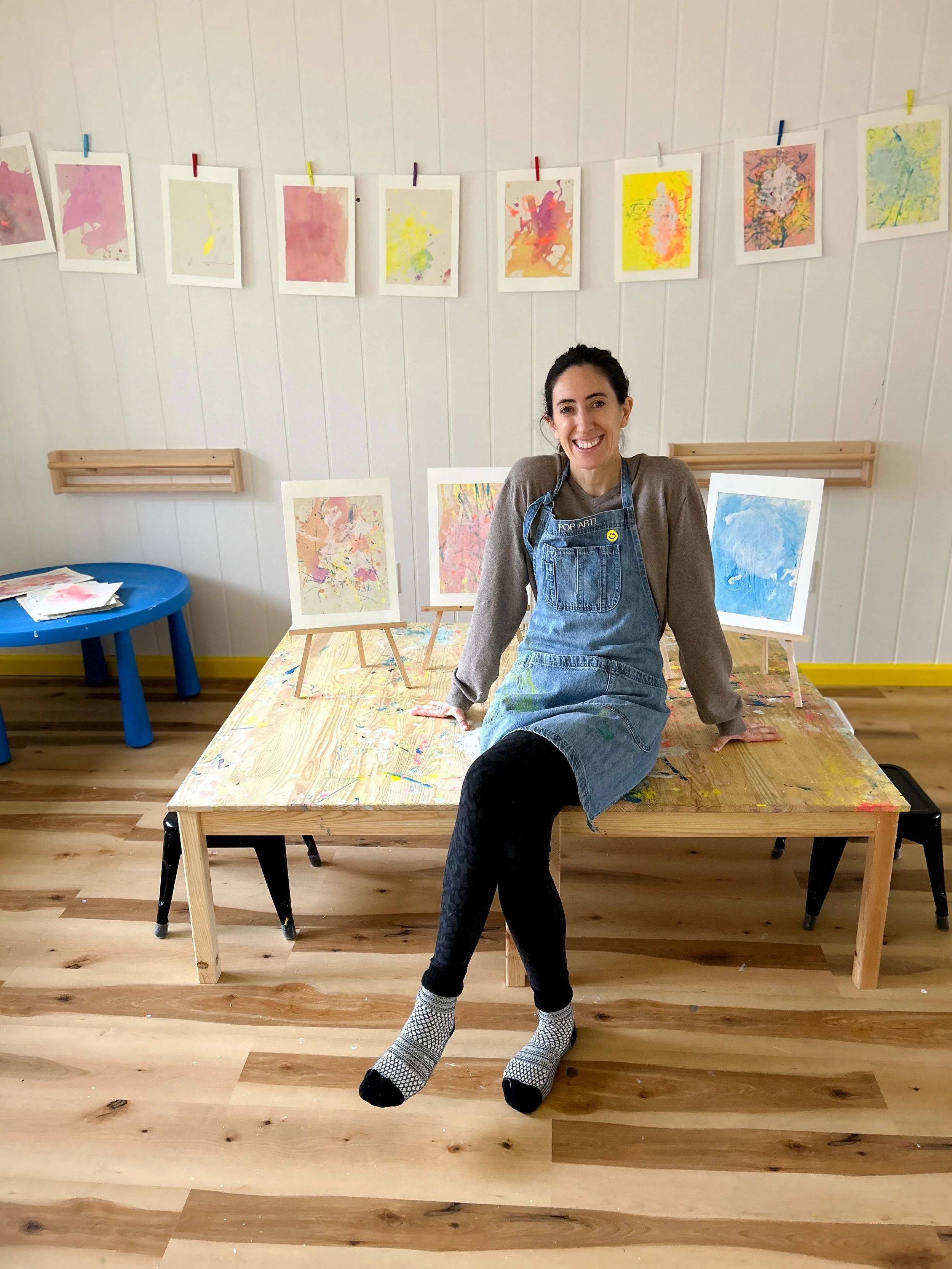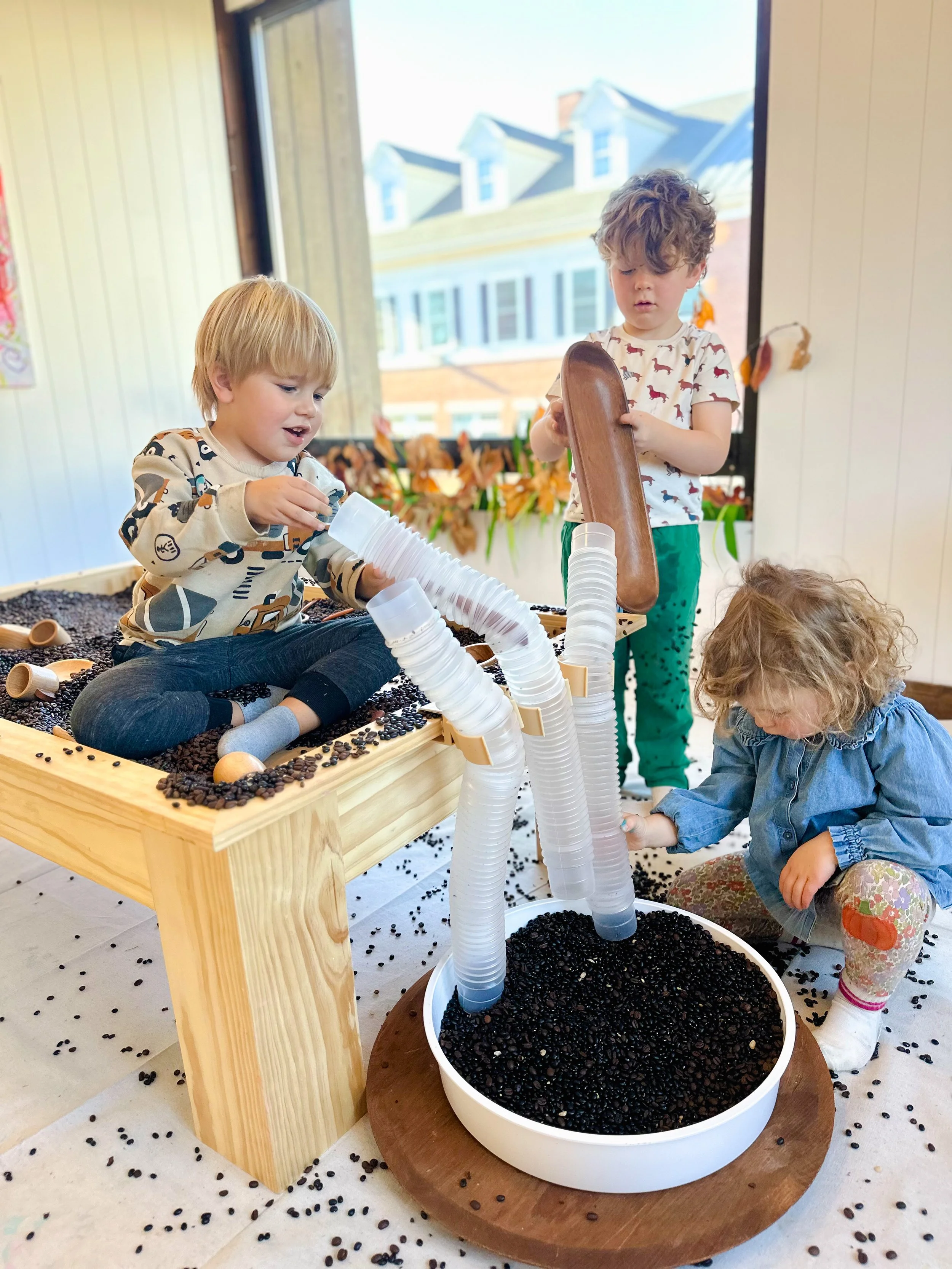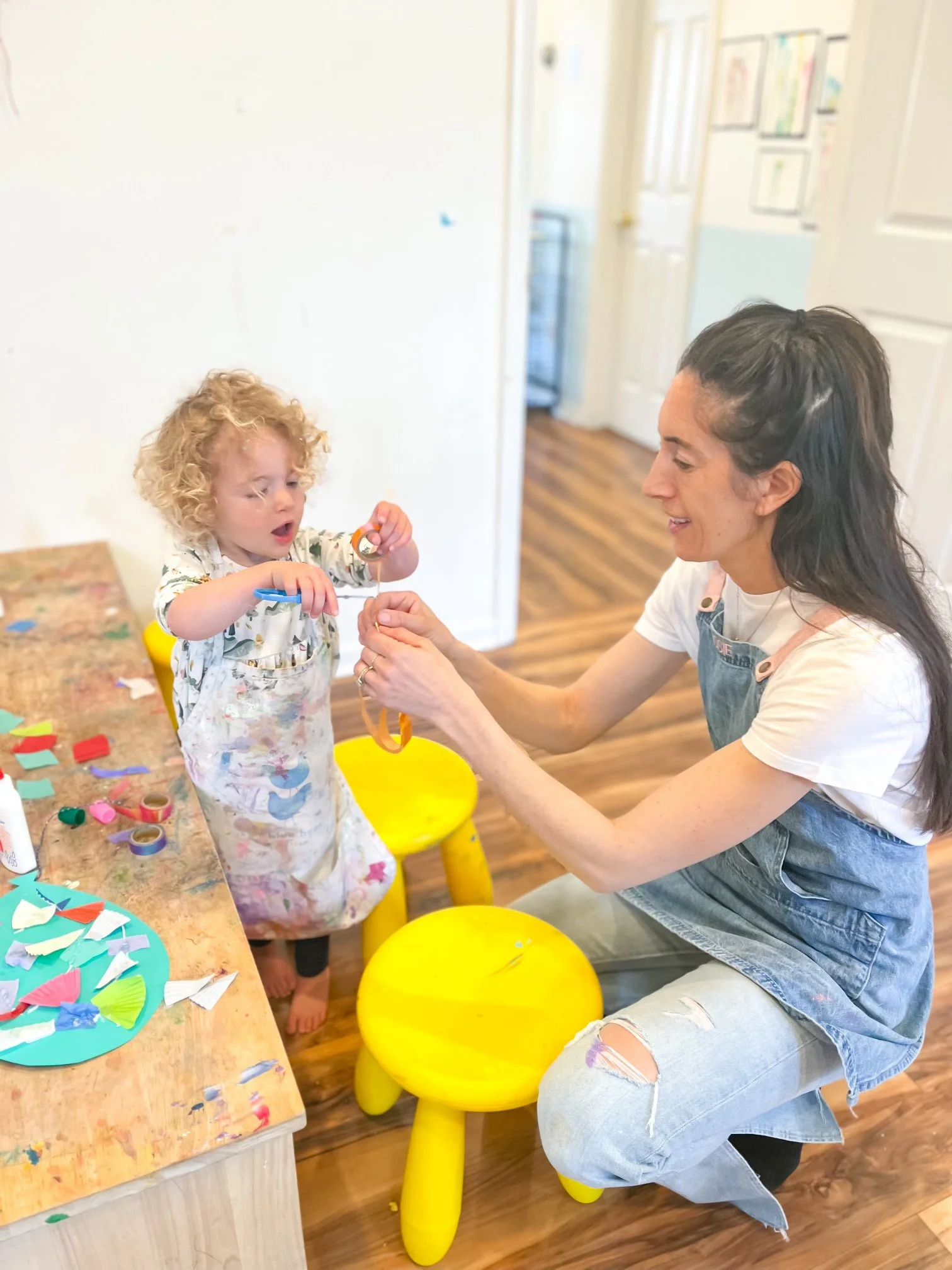Why Painting at Easels is More Than Just Art: The Cross-Body Brain Magic You Never Knew About
Hey Parents!
You know that moment when your kid is standing at an easel, arm stretching from one side to the other, paintbrush dancing across the paper? That's not just art-making. That's brain-building in its most spectacular form.
The Secret Superhighway: Cross-Body Movement
At PopArt! Kids, we're obsessed with those magical moments when natural kid movements connect to brain development. Cross body movement may sound fancy, but it’s pretty simple. When your child reaches across their body to paint, they're essentially doing brain push-ups.
What's Actually Happening?
Imagine your child's brain like a complex communication network. When they reach across their body to grab a paintbrush or draw a line, they're creating superhighways between the left and right sides of their brain. It's like building the most incredible bridge of neural connections.
Why cross body movement is your child’s secret superpower
Every time a child crosses the midline, they're developing skills that go way beyond art:
Coordination becomes smoother. Those awkward toddler movements? They're transforming into purposeful, precise actions.
Reading and writing skills get a massive boost. The same brain pathways used for crossing the midline are crucial for tracking words from left to right and understanding spatial relationships.
Problem-solving becomes more intuitive. As the brain's hemispheres learn to communicate, your child becomes a more flexible thinker.
Real-World Brain Development in Action
Watch a child at an easel and you're witnessing a cognitive masterpiece. That seemingly simple act of reaching across to paint is actually:
Developing hand-eye coordination
Improving bilateral coordination
Strengthening core muscles
Building spatial awareness
The PopArt! Kids Approach
We're not just holding paintbrushes. We're building brains. Our easels aren't just art stations – they're cognitive development playgrounds.
Bringing the Magic Home
Want to supercharge cross-body learning? Here are some PopArt! approved tricks:
Butterfly Painting: Fold a piece of paper in half, add paint to one side, fold and smoosh. Watch your child's hands work across the midline as they create symmetrical masterpieces.
Windmill Drawing: Encourage big arm movements that cross the body's midline. Think wild, sweeping motions that feel more like dance than drawing.
Musical Painting: Put on some music and let your child paint to the rhythm, encouraging big, crossing movements.
FAQ: Sensory Art and Preschool Development
Q: What are the best sensory activities for preschoolers? A: The best sensory activities for preschoolers engage multiple senses at once! Finger painting, play dough exploration, texture bins, and water play are excellent choices. At Pop Art! Kids, we design sensory art experiences specifically for 1.5-5 year olds that support their natural development.
Q: How does sensory play help preschool readiness? A: Sensory play builds essential preschool skills including fine motor control, focus and attention, following directions, and emotional regulation. Children who engage in regular sensory activities often transition more easily to structured preschool environments.
Q: Are messy sensory activities appropriate for preschool classrooms? A: Absolutely! Messy sensory play is crucial for preschool development. It teaches children about textures, cause and effect, and helps them become comfortable with different materials. The key is proper setup and supervision.
Q: What age should children start sensory art classes? A: Children can benefit from sensory art experiences as early as 12-18 months! We welcome children starting at 1.5 years old in our sensory art classes. Early exposure to varied textures and materials supports healthy sensory development.
Q: How do sensory activities support learning in preschoolers? A: Sensory activities help preschoolers learn through their natural way of exploring - their senses! This type of hands-on learning improves memory, language development, problem-solving skills, and prepares them for more complex academic concepts.
Q: What should I look for in a quality sensory preschool program? A: Look for programs that offer open-ended exploration, use natural materials, focus on process over product, and understand child development. Quality sensory programs should feel joyful and allow children to lead their own discoveries.
Q: Are sensory activities beneficial for neurodivergent preschoolers? A: Absolutely! Sensory activities can be especially wonderful for neurodivergent children, including those with autism, ADHD, or sensory processing differences. We believe in creating inclusive environments where all children can explore and learn through their senses. We adapt activities to honor each child's unique sensory preferences and needs.
Q: How can parents continue sensory learning at home? A: Simple sensory activities like water play, finger painting, play dough, and texture exploration can easily be done at home. The key is providing safe materials and allowing children to explore at their own pace without pressure for specific outcomes.
The Serious Science (That Sounds Like Magic)
Occupational therapists and neurologists get excited about cross-body movement for a reason. It's not just cute – it's crucial. These activities literally help build the brain's communication infrastructure.
Ready to Unlock Your Child's Potential?
Every stroke, every reach, every messy moment is a step towards incredible brain development.
Limited Spots Available!
Remember: Today's messy painting is tomorrow's brilliant thinking.
Messily yours, Rosie Founder, PopArt! Kids
At PopArt! Kids Studio in Ridgefield and Wilton, Connecticut, nestled in the beautiful southwestern Fairfield County, we've created joyful, messy paradises where every child – from sensory seekers to sensory cautious, from typically developing to neurodivergent – discovers their own unique creative voice. Our spaces hum with discovery, occasional happy shrieks, and the sound of minds expanding through fingers exploring.
Come join our community where paint sometimes ends up in hair (it washes out!), where process matters more than product, and where we celebrate when clay sculptures collapse because that means we get to problem-solve and rebuild. Our preschool art classes, toddler sensory adventures, and summer camps aren't just about making pretty things for the refrigerator – they're about growing brains and hearts through the language all children naturally speak: sensory exploration.
Your child belongs here. Their unique way of experiencing the world is welcome here. Come get messy with us!
Ready to Watch Your Child's Mind Bloom Through Art?
Every sensory art experience is a step toward confident, creative thinking. Don't wait to give your child the cognitive benefits of sensory exploration in our supportive community.
Two Studios!
Ridgefield Studio 80 Grove Street
Ridgefield, CT
rosie@popart.kids (Fairfield County) Registration
Wilton Studio 196 Danbury Road
Wilton, CT
(Fairfield County) Registration
Serving families throughout Fairfield County including Danbury, Redding, Weston, and New Canaan
Limited Spaces Available for Spring Classes!






